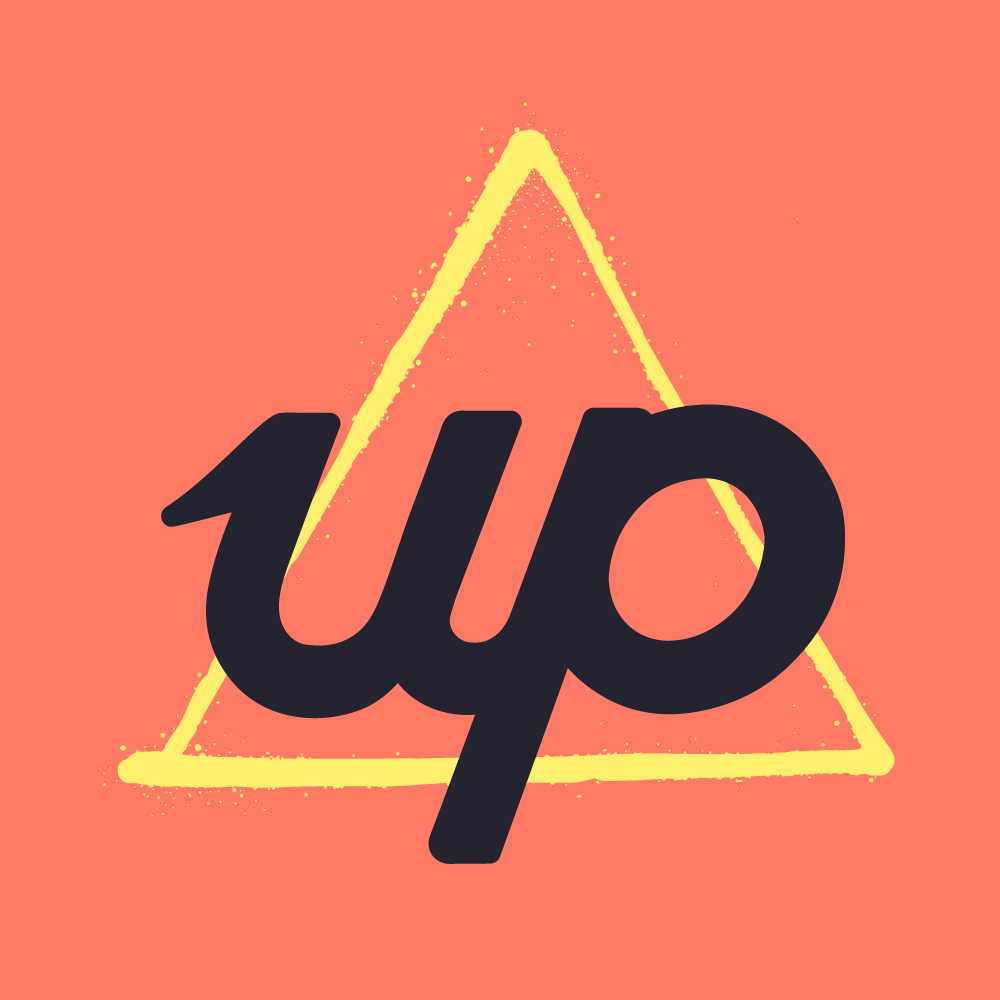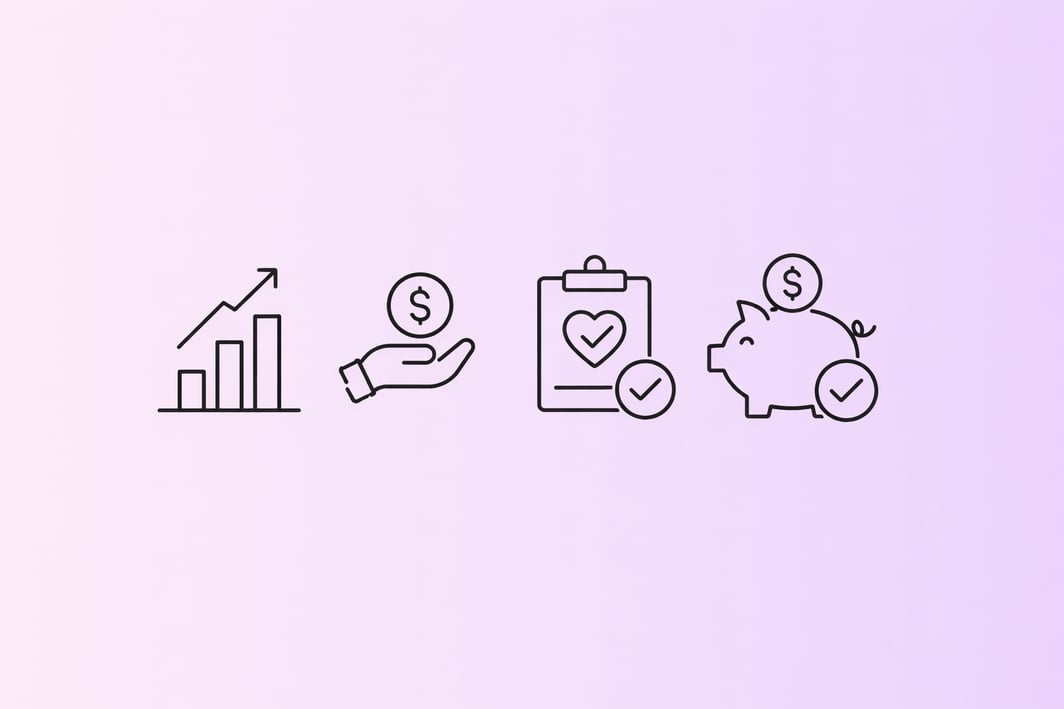RBA Cash Rate Tracker
Get the latest updates on the Reserve Bank of Australia’s cash rate decisions and explore how these changes shape the economy, inflation, and lending rates.
Historical Rate Trend
RBA Cash Rate Target over time
Previous RBA Cash Rate Target3.60%
How much will you save after the RBA rate cut?
Ask Bheja, your AI mortgage copilot, how the latest RBA cash rate change affects your home loan. Enter your loan details to instantly see potential savings on your repayments.
Is your bank passing on rate cuts?
See which banks have recently reduced their home loan rates
Data from the last 30 days • Updated: 24 Dec 2025, 12:15 pm
Banks with Rate Cuts
Largest Rate Cut
Average Rate Cut
Total Products
Top 15 Banks with Rate Cuts
| Rank | Bank | Cut Range | Max Cut | Avg Cut | Latest Cut | |
|---|---|---|---|---|---|---|
1 |  Bendigo BankMajor Bank 9 products with cuts | 0.11% | -0.11% | 0.11% | 19 Dec 2025 | |
2 |  MOVE BankMajor Bank 10 products with cuts | 0.05% - 0.10% | -0.10% | 0.07% | 17 Dec 2025 | |
3 |  Bank of Queensland LimitedMajor Bank 2 products with cuts | 0.05% - 0.06% | -0.06% | 0.06% | 25 Nov 2025 | |
4 |  UnloanMajor Bank 2 products with cuts | 0.05% | -0.05% | 0.05% | 17 Dec 2025 | |
5 |  TMCUCommunity Owned 1 products with cuts | 0.60% | -0.60% | 0.60% | 24 Dec 2025 | |
6 |  G&C Mutual BankCommunity Owned 1 products with cuts | 0.21% | -0.21% | 0.21% | 16 Dec 2025 | |
7 |  Beyond Bank AustraliaCommunity Owned 15 products with cuts | 0.10% - 0.15% | -0.15% | 0.13% | 23 Dec 2025 | |
8 |  Bank of usCommunity Owned 7 products with cuts | 0.05% - 0.15% | -0.15% | 0.11% | 1 Dec 2025 | |
9 |  P&N BankCommunity Owned 2 products with cuts | 0.12% - 0.14% | -0.14% | 0.13% | 4 Dec 2025 | |
10 |  Summerland BankCommunity Owned 1 products with cuts | 0.05% | -0.05% | 0.05% | 17 Dec 2025 | |
11 |  BNK Bank (Goldfields Money/BCHL)Other 16 products with cuts | 0.20% - 2.25% | -2.25% | 0.36% | 24 Nov 2025 | |
12 |  Woolworths Team BankOther 6 products with cuts | 0.20% - 0.60% | -0.60% | 0.40% | 16 Dec 2025 | |
13 |  Virgin MoneyOther 9 products with cuts | 0.05% - 0.50% | -0.50% | 0.22% | 24 Dec 2025 | |
14 |  Regional Australia BankOther 2 products with cuts | 0.25% | -0.25% | 0.25% | 12 Dec 2025 | |
15 |  Reliance BankOther 1 products with cuts | 0.21% | -0.21% | 0.21% | 16 Dec 2025 |
Data sourced from 7,196 home loan product variations
Showing 93 products with rate cuts in the last 30 days
The ultimate guide to RBA cash rate changes
A deep dive into how shifts in the Reserve Bank’s cash rate influence inflation, growth, and investment trends and what it means for households and businesses.

Pravin Mahajan
Founder @ Bheja.ai | Mortgage Broker | Ex-CTO RateCity & CIMET

Mahendra Duddempudi
CTO & Head of Research
Updated on 10 Dec 2025
- The RBA held the cash rate at its December 2025 meeting. The current cash rate is 3.60%.
- The RBA uses the cash rate to manage inflation within its 2–3% target, and reviews it eight times a year.
- A 25 basis point cut can reduce monthly repayments by around $100 on a $600,000 variable loan.
- The next decision is due on 2-3 February 2026.
Understanding how the RBA's Decides the cash rate
The RBA’s board meets eight times a year, roughly every six weeks and over two days to decide whether to raise, cut, or hold the cash rate, with a decision announced on the second day (always a Tuesday) at 2:30 pm (AEST/AEDT).
These decisions directly affect home loan rates, borrowing costs, and Australia’s overall economy.
The RBA’s goal is simple:
✅ Keep inflation between 2–3%
✅ Support jobs and economic growth
To do that, it studies a wide range of economic data before making any move.
Key economic indicators driving RBA cash rate decisions
Explore the latest data shaping Australia’s cash rate, including inflation, employment, GDP growth, and consumer spending. Track historical trends and see how these indicators guide future rate moves.
Economic Highlights
- Inflation accelerates significantly; headline CPI now 3.8%, core inflation 3.3%.
- Economic growth slows markedly to 0.4% as unemployment rate rises to 4.3%.
- Australian house prices now average over $1 million, outpacing modest 3.4% wage growth.
Inflation (CPI)
Consumer Price Index measuring changes in the cost of living. Both headline and core (trimmed mean) inflation are measured monthly, comparing to the same month last year.
Headline Inflation (YoY)
6 Months Ago
Core Inflation - Trimmed Mean (YoY)
6 Months Ago
Headline Inflation Trend (Monthly)
Core Inflation Trend (Monthly)
💡Expert Insights
Key Takeaway
The flat monthly price change is a welcome sign, hinting that the recent acceleration in inflation might be pausing. We'll want to watch closely to see if this is a true deceleration or just a one-off breather.
What's Happening
Inflation has been ticking up, reaching 3.8% annually, a noticeable jump from 2.4% a year ago. We've seen a pretty steady climb recently. Interestingly, while the year-over-year figure is higher, the latest month-over-month change was flat, after a 0.5% rise, suggesting things might be stabilizing, at least for now.
Impact on Borrowing
With inflation still elevated, though maybe cooling slightly month-to-month, the central bank might feel pressure to keep interest rates steady or even consider another hike. Borrowing costs for things like mortgages and loans could remain quite high.
Unemployment Rate
This indicator essentially measures the percentage of the labor force actively looking for work but currently unable to find a job. It's a key thermometer for the health of our job market.
Current Value
Quarterly Change
fell to a lower level
Same Time Last Year
April 2025
12-Month Trend
💡Expert Insights
Key Takeaway
What this really tells us is that while the job market isn't exactly booming, it's also not collapsing. It’s moving towards a more balanced, potentially sustainable, state rather than extreme tightness.
What's Happening
The rate saw a nice dip from last month, going from 4.45% down to about 4.34%. That's positive. However, looking back, it's still noticeably higher than the 3.94% we saw this time last year, indicating a general loosening in the job market recently.
Impact on Borrowing
A slightly elevated unemployment rate typically eases pressure on central banks to hike rates. If this trend of a softer job market continues, it could eventually pave the way for future rate cuts, making borrowing cheaper.
GDP Growth
This measures how much the total value of all goods and services produced in a country has grown over the past year. It's a key indicator of economic health.
Current Value
12-Month Trend
💡Expert Insights
Key Takeaway
This prolonged low growth, especially compared to last year, paints a picture of a very subdued economy. It suggests we're in a period of significant economic softness, maybe even flirting with stagnation.
What's Happening
Growth has been quite sluggish, holding steady at 0.4% for two of the last three quarters after a brief bump to 0.7%. It's notably slower than the 0.9% we saw this time last year, suggesting a real slowdown.
Impact on Borrowing
Such modest growth usually means less inflation pressure. Central banks might feel less need to hike rates, or could even consider cuts to try and boost economic activity.
Home Prices
This figure measures the year-over-year percentage change in the average price of homes. It essentially shows if homes are getting pricier or cheaper compared to twelve months ago.
Current Value
Quarterly Change
rose by 2.2%
Same Time Last Year
March 2024
12-Month Trend
💡Expert Insights
Key Takeaway
This rebound from last year's dip shows incredible resilience in the housing market. It hints at robust underlying demand, maybe even a supply crunch, keeping prices on a strong upward trajectory for now.
What's Happening
We've seen a noticeable acceleration recently. Just a year ago, average home prices were actually declining year-over-year. Now, they're showing a strong 4.54% increase, up from a modest 0.78% six months back. This indicates a solid upward trend.
Impact on Borrowing
When home prices climb steadily like this, it often signals inflation pressures. This could nudge central banks to consider higher interest rates to cool the economy, potentially making borrowing more expensive for everyone.
Wage Growth
The Wage Price Index really just tells us how much wages and salaries are changing, taking out things like bonuses. It's a key look at what employers are actually paying for work.
Current Value
Quarterly Change
remained stable to the same level
Same Time Last Year
March 2024
12-Month Trend
💡Expert Insights
Key Takeaway
The fact that wage growth has leveled off around 3.4% is a pretty solid sign. It hints that the economy is managing to balance labor demand without wages spiraling out of control, which is encouraging for overall stability.
What's Happening
Wages have stayed pretty consistent lately, holding at 3.4% for the last couple of quarters. That's a hair lower than the 3.5% we saw six months back, but still a slight bump up from the 3.3% mark this time last year. It's showing a steady, rather than accelerating, pace.
Impact on Borrowing
Steady wage growth like this suggests less immediate pressure on inflation from labor costs. This might give the central bank a bit more breathing room, potentially easing the urgency for further rate increases to cool the economy.
Ready to act on these insights?
Use our tools and talk to experts to understand how these economic conditions affect your home loan
Home Loan Market Snapshot
Real-time insights from thousands of Australian home loan products
Updated: 24 Dec 2025, 12:15 pm
Average Variable Rate
6.21%
Owner Occupied P&I
Average Fixed Rate
5.89%
3-year fixed
Best Available Rate
4.79%
Fixed • Owner Occupied
Total Products
6,901
Available in market
Most Competitive Lenders
Big 4 Banks Average
6.18%
Market Average
6.00%
Online Lenders Average
5.71%

Easy Street
13 products
From
4.89%
Avg
5.23%

gmcu
20 products
From
4.99%
Avg
5.34%

ORANGE CREDIT UNION LTD
15 products
From
5.09%
Avg
5.38%

Unloan
4 products
From
5.19%
Avg
5.41%

Up
6 products
From
5.20%
Avg
5.45%
Rate Comparison by Category
Variable vs Fixed
2,307 products
4,594 products
Owner Occupied vs Investment
3,461 products
3,414 products
Principal & Interest vs Interest Only
3,988 products
2,843 products
Market Features Overview
Products with Offset Account
Products with Cashback Offers
Average Cashback Amount
Products with No Fees
(No monthly, annual, or ongoing fees)
Data sourced from 6,901 home loan products
Analysis based on products supporting minimum $300K loan amounts over 25-year terms
What is the cash rate?
The cash rate is the interest rate the Reserve Bank of Australia (RBA) sets for overnight loans between commercial banks. This rate helps shape interest rates on mortgages, personal loans, savings accounts, and other financial products across the economy.
Banks borrow and lend money overnight in the interbank market. The RBA steps in to keep the cash rate near its official target, which then acts as the base for setting interest rates throughout the economy.
Adjusting the cash rate helps manage inflation, economic growth, and jobs. Lowering the cash rate encourages people and businesses to spend and invest more. Raising it helps slow things down if the economy is growing too fast.
What is the RBA and how does it control the cash rate?
The Reserve Bank of Australia is the nation’s central bank. Its main job is to keep the economy stable, support jobs, and keep inflation low. The official cash rate is one of its main tools for doing this.
The RBA Board meets often to check on Australia’s economy. If inflation is too high or growth is too fast, they might raise the cash rate. If the economy is slowing or inflation is low, they might lower the rate to encourage more spending and investment.
The RBA changes interest rates to help the economy grow steadily and to keep inflation within its 2–3% target range.
How often does the RBA change the cash rate?
The Reserve Bank of Australia (RBA) Board meets eight times per year to review economic conditions and determine the official cash rate. These meetings typically span two days, allowing the Board to thoroughly assess the latest economic indicators, including inflation trends, employment data, and global financial developments.
Based on this assessment, the Board may choose to adjust the cash rate or maintain it at the current level.
RBA cash rate meeting schedule and decisions 2025
What's the RBA cash rate history?
The RBA’s cash rate has fluctuated significantly over the years. It reached a peak of 17.50% in January 1990 as the Reserve Bank aimed to control high inflation. During the COVID-19 pandemic, the rate was lowered to a historic low of 0.10% in November 2020 to support the economy. From 1990 to 2025, the average cash rate was approximately 3.87%. Currently, at 4.10%, the rate is slightly above this long-term average, reflecting a moderately restrictive monetary policy stance aimed at curbing inflation. However, recent rate cuts suggest the RBA is beginning to ease policy as inflation shows signs of easing.
Looking ahead, major banks and analysts don't expect further rate cuts through 2025 or in the first quarter of 2026. In fact, some economists are anticipating rate hikes in early 2026.
When does the RBA change the cash rate?
When the RBA raises the cash rate?
The RBA raises the cash rate when it needs to cool the economy and control inflation. If prices rise too fast, such as in housing, groceries, or fuel so the RBA may act to slow demand.
A higher cash rate makes loans and mortgages more expensive but encourages saving. This reduces demand in the economy, helping bring inflation back within the RBA’s target range of 2–3%.
When the RBA cuts the cash rate?
The RBA cuts the cash rate when it wants to stimulate the economy. This usually happens during periods of high unemployment or slow economic growth.
Lowering the cash rate makes loans cheaper, encourages business investment, and boosts consumer spending. For example, in November 2020, the RBA dropped the cash rate to 0.10% to support Australia’s recovery from the economic impact of COVID-19.
When the RBA keeps the cash rate on hold?
The RBA may hold the cash rate steady when the economy is balanced, meaning inflation is under control, unemployment is low, and growth is sustainable.
In these conditions, maintaining the current cash rate helps preserve price stability and long-term confidence in Australia’s financial system.
RBA cash rate vs mortgage rate explained
The RBA cash rate and home loan interest rates are connected but not the same. The cash rate is the RBA’s target for the overnight interbank lending market. It sets the benchmark for the cost of money in the financial system.
Your mortgage rate, on the other hand, is what a bank or lender charges you to borrow money for your home loan.
When the RBA cuts the cash rate, banks often reduce their variable mortgage rates, making home loans cheaper. However, this depends on each lender’s funding costs, market competition, and profit strategy, meaning not every rate cut is passed on in full.
Fixed home loan rates are influenced more by long-term market expectations and global bond yields than by the immediate cash rate. That’s why fixed rates don’t always move in sync with the RBA’s decisions.
Does the cash rate affect bank interest rates?
Yes. The RBA cash rate has a direct impact on how banks and lenders set their interest rates, though the link isn’t always one-to-one.
When the Reserve Bank of Australia (RBA) changes the cash rate, it changes the cost of borrowing money for banks.
- A higher cash rate makes it more expensive for banks to borrow funds, which often leads to higher home loan rates for borrowers.
- A lower cash rate reduces funding costs, allowing banks to lower their variable loan rates and stimulate borrowing.
However, not all rate changes move in perfect sync with the RBA.
Banks also rely on customer deposits, offshore funding, and wholesale markets, which can move independently of the cash rate.
That’s why lenders sometimes adjust rates out of cycle with the RBA’s decisions.
How banks and lenders set their interest rates?
Banks consider multiple factors when deciding on interest rates:
- The RBA cash rate and other wholesale funding costs
- The interest they pay on customer deposits
- Their assessment of risk for different loan types
- Competitive pressure from other banks and lenders
- Their target profit margins and business goals
These combined factors determine how much a bank charges for home loans and why rates can vary so much between lenders.
Why banks don’t always pass on rate cuts?
When the RBA lowers the cash rate, most people expect banks to cut home loan rates too but that doesn’t always happen.
Banks set their rates based on more than just the RBA decision. They also consider their own funding costs, including customer deposits, offshore borrowing, and the Bank Bill Swap Rate (BBSW) which can move independently of the RBA’s cash rate.
If these costs rise, banks may hold back some or all of a rate cut to protect their profit margins. Often, they pass on discounts only to new customers, while existing borrowers stay on higher “back-book” rates.
This approach helps banks balance customer competition, profitability, and financial stability, especially when markets are volatile.
In short:
- RBA cuts don’t always mean lower home loan rates.
- Banks weigh multiple funding and market factors.
- New customers often get better rates than existing ones.
RBA cash rate: What it means for you?
Changes to the RBA’s cash rate ripple through the entire economy — shaping home loan rates, savings returns, business investment, and property prices.
It’s important to remember that a change in the official cash rate doesn’t automatically mean banks will move their rates the same way. Each lender decides whether to pass on rate changes based on their funding costs, profit margins, and market competition.
Here’s how different groups are affected:
Borrowers
When the cash rate falls, lenders often lower variable home loan rates, reducing monthly repayments. When it rises, repayments usually increase. Either way, it’s a good time to check your home loan rate and see if refinancing could save you money.
Savers
Rate cuts usually mean lower returns on savings accounts and term deposits. Rate hikes can improve deposit rates, though outcomes vary by bank.
Property buyers
Lower rates boost borrowing power and can lift property prices as demand grows. Higher rates reduce affordability, helping cool the housing market.
Investors
Falling rates tend to support share markets and property investments, as investors seek higher returns. Rising rates can make bonds and fixed income more attractive, shifting money away from riskier assets.
Households and businesses
Changes in the cash rate affect spending confidence. Lower rates can support household budgets and business borrowing, while higher rates typically slow spending to curb inflation.
The RBA cash rate is one of Australia’s most powerful economic tools — but it doesn’t guarantee banks will follow suit. Staying informed, comparing rates, and reviewing your financial position regularly can help you make the most of every rate change.
How’s your rate is holding up?
Interest rates move. Your home loan should too.
Instead of guessing what to do after every RBA rate change, perform a quick Home Loan Health Check and see if your current deal still makes sense.
Ask Bheja to:
- Check if you’re overpaying on your current rate
- Compare your loan with the latest RBA cash rate impact
- Estimate potential savings from refinancing
- Discover if fixing or splitting could improve flexibility
It only takes a minute to find out if your home loan is still working for you.
What our customers say
Trusted by thousands of Australians for their home loan journey
Ian Fletcher
a month ago
I tried the home loan health check and was amazed how quickly it outputted the results with a graph of how my loan compares. With an estimated savings of over 100 thousand at a click of other home loa...
Always Seeking
2 weeks ago
I found the calculator super easy and informative. Great to help me plan my next steps. I feel this will make our search and finance for a investment property super easy.
Deb M
2025-10-28
I found Bheja.ai to be such a great DIY tool to explore mortgage options, no wall of big jargons, no judgement for my messy thoughts, most importantly no agenda trying to push sell anything, just a wa...
Frequently Asked Questions
The RBA Cash Rate is the official interest rate target set by the Reserve Bank of Australia for overnight loans between banks. It serves as the primary tool for the RBA to implement monetary policy and influence economic activity, inflation, and employment levels across Australia.

Pravin Mahajan
Founder @ Bheja.ai | Mortgage Broker | Ex-CTO RateCity & CIMET
Pravin Mahajan is the Founder of Bheja.ai and an accredited Mortgage Broker (Credit Rep. 570637). Based in Sydney, he sits at the unique intersection of financial regulation and enterprise technology.
With over 30 years of experience, Pravin has architected the consumer platforms that millions of Australians rely on for daily financial and purchasing decisions. His career is defined by building high-scale systems that simplify complex choices:
- RateCity (Acquired by Canstar): As Chief Product & Technology Officer, Pravin led the tech transformation that culminated in the company's acquisition. He orchestrated "Australia’s First Home Loan Sale," a digital initiative that reached over 12 million people.
- CIMET: As CPTO, he built enterprise-grade infrastructure for energy and broadband comparison, scaling operations to support major B2B partners.
- Salmat (Lasoo): He architected digital catalogue systems used by 5.7 million monthly users, digitising the retail experience for brands like Target and Myer.
- Woolworths: Designed the real-time, secure "Pay at Pump" transaction infrastructure deployed Australia-wide.
Today, at Bheja.ai, Pravin combines this deep technical background with his Certificate IV in Finance and Mortgage Broking to build AI agents that don't just compare loans, but help Australians actively secure their financial future.

Mahendra Duddempudi
CTO & Head of Research
Mahendra Duddempudi is the CTO, Founder, and Head of Research at Bheja.ai. With 15+ years in software architecture, data engineering, and analytics, he combines technology and research to simplify complex topics in property, home loans, and finance. His work focuses on using AI, natural language search, and data-driven insights to make financial decisions clearer and more accessible for Australians.


